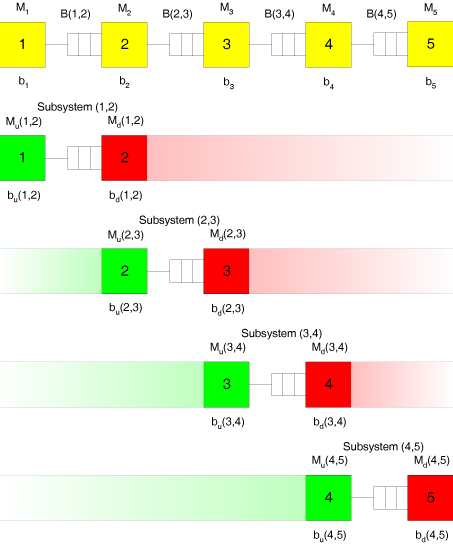Analytical Performance Evaluation
Analytical performance analysis methods are based on the stochastic modeling of flow production systems. They use the analytical results of queueing theory for the modeling of a flow production system. Being much faster than simulation models, analytical performance models can easily be imbedded into optimization approaches that require the precise evaluation of thousands of alternativ system configurations.
Basically, these methods decompose a flow line consisting of M stations into (M-1) subsystems consisting of only two stations. These two-station subsystems are analyzed in isolation. The effects of the remaining part of the flow line is then accounted for in the analysis of a subsystem by adjusting the data of the stations in each subsystem. The following figure shows a 5-station system decomposed into four 2-station subsystems.

Each of the two-station subsystems is analyzed with the help of an exact or approximate model. The results are then adjusted in an iterative procedure.
The software system POM Flowline Optimizer uses this type of decomposition to analyse and optimise flow lines with limited buffers among the stations. It is successfully applied in industrial companies for the optimization of automobile body shops or for the the design of flow lines in the electronics industry.